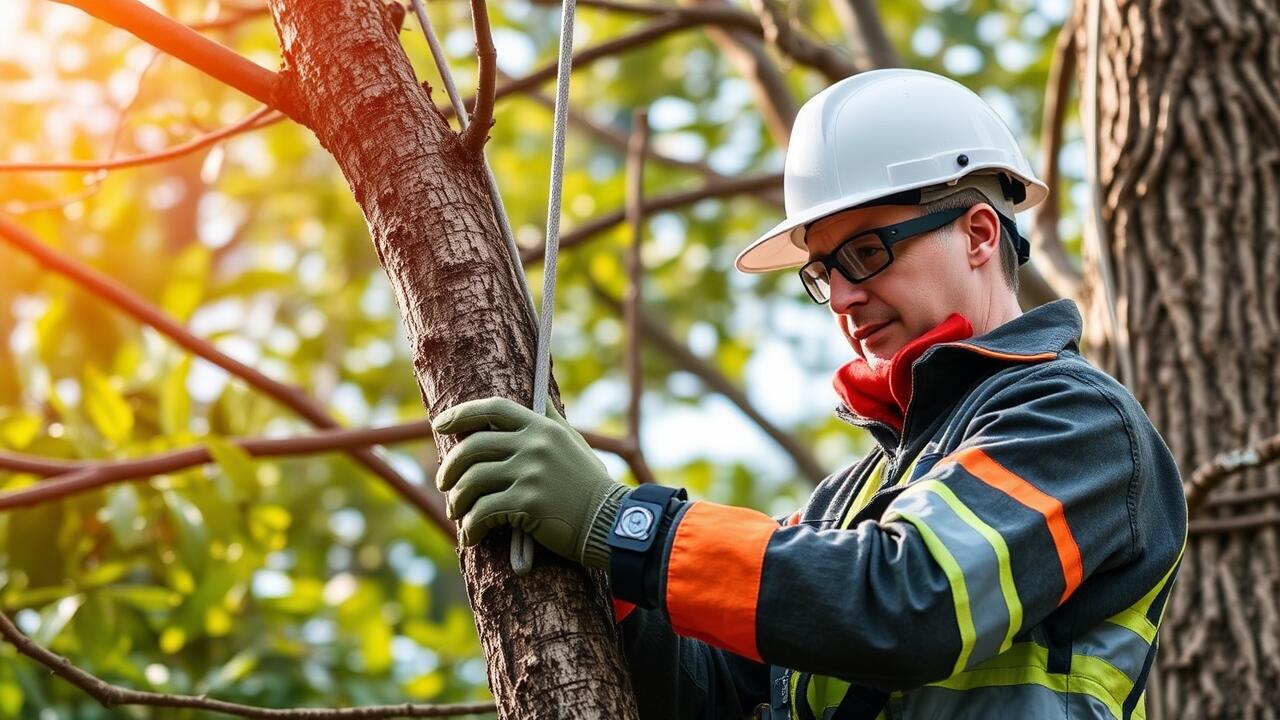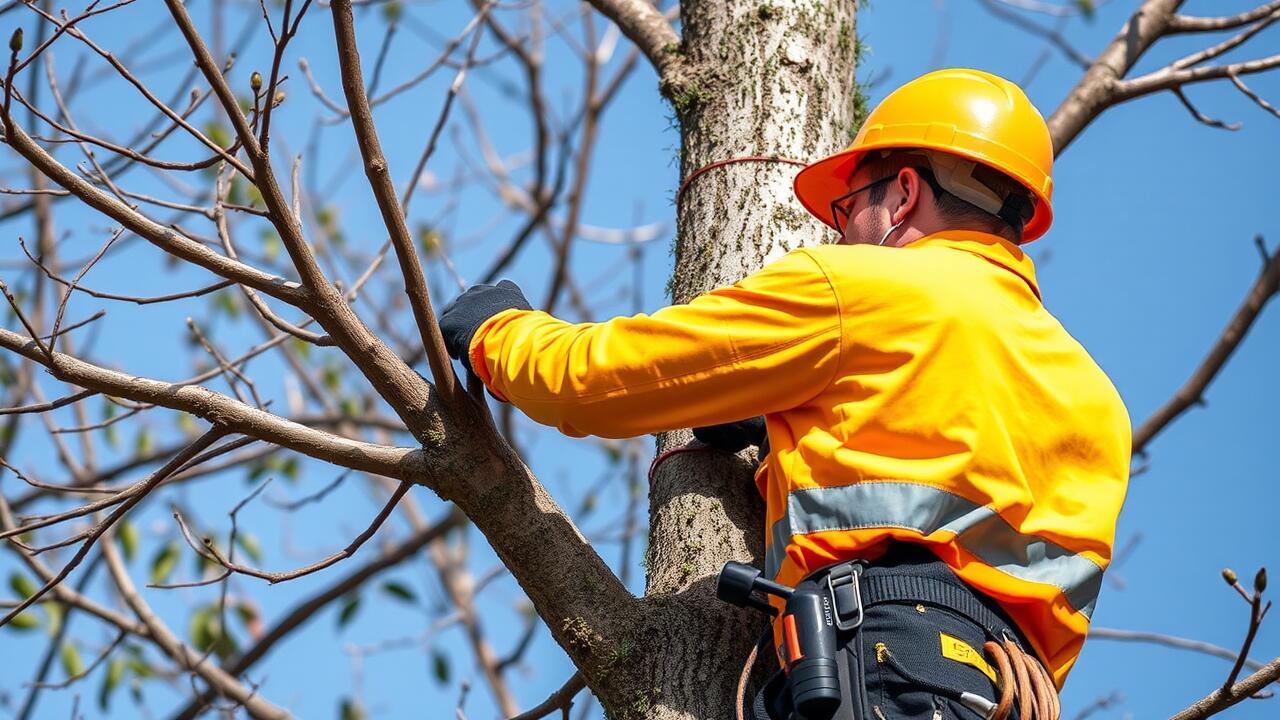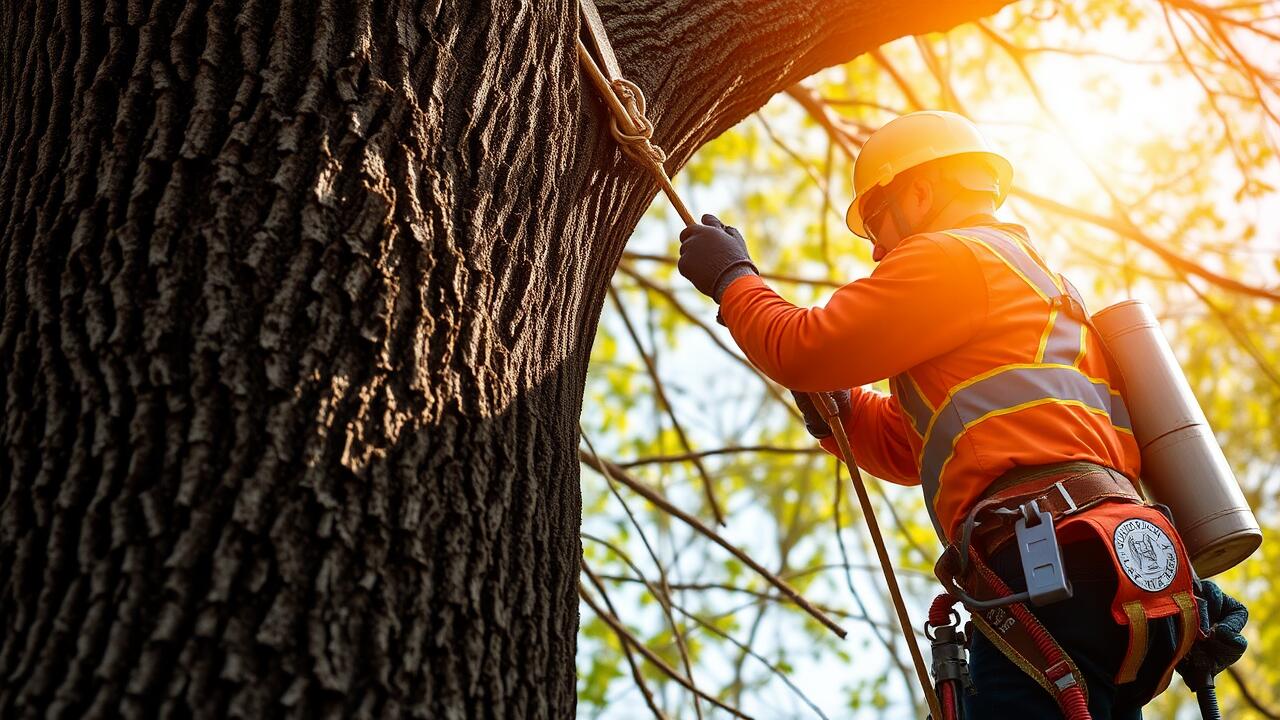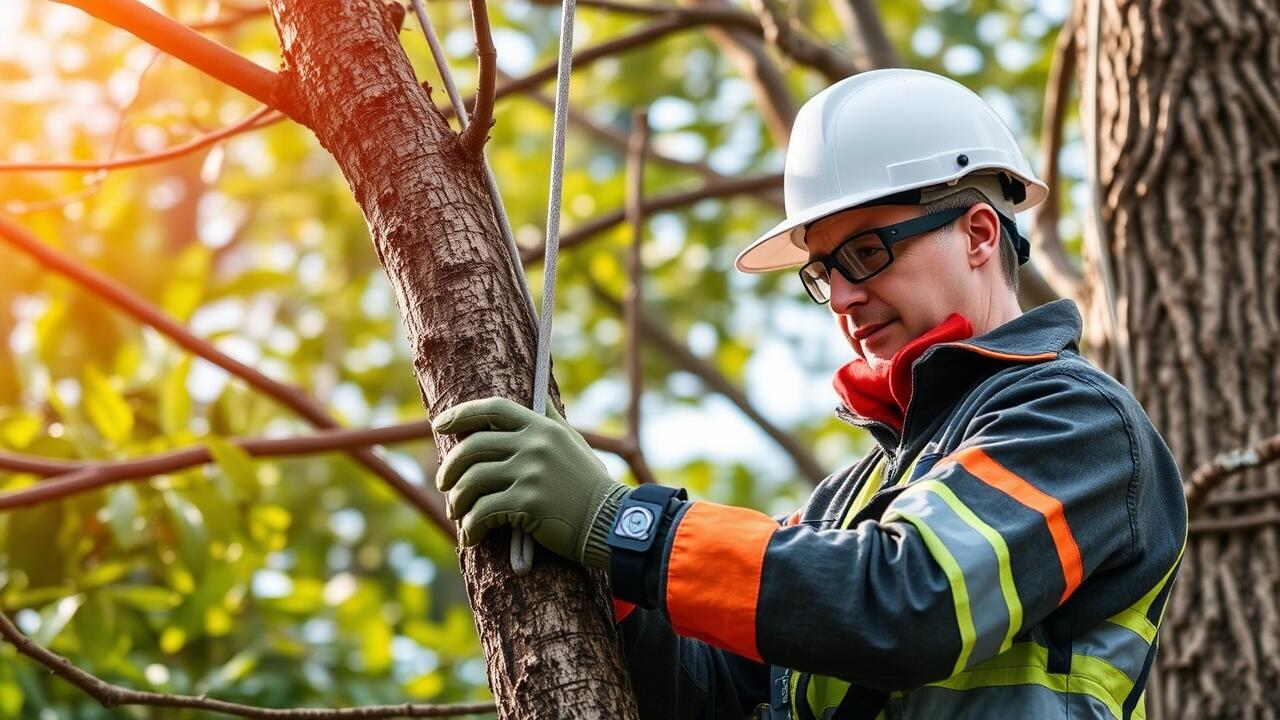
Maintenance Requirements Post-Cabling
After cabling has been completed, ongoing maintenance is essential to ensure the effectiveness of the installation and the overall health of the tree. Regular inspections are necessary to check for any signs of wear, loosening, or damage to the cables and braces. Arborists recommend monitoring the trees for any changes in growth patterns that may indicate stress or structural issues stemming from the cabling itself. Intervals between checks can vary depending on the species of tree and environmental conditions but having a schedule can aid in addressing problems early.
In addition to inspections, adjustments may need to occur over time as the tree grows. Cables that were snug at installation may become too tight or may need repositioning to accommodate the tree's natural movement and growth. Ensuring the cables remain effective without causing harm takes vigilance and expertise. For those searching for assistance with these tasks, a simple query for "Tree Cabling and Bracing near me" can help connect tree owners with qualified professionals who specialize in long-term tree care and maintenance.
Regular Inspections and Adjustments
Regular inspections are crucial after a tree has been cabled to ensure that the cabling system remains effective and safe. Arborists recommend checking the installation at least once a year or following severe weather events. This regularity helps identify any signs of wear or changes in the tree's structure that may necessitate adjustments. Over time, the tree may grow and shift, potentially loosening or damaging the cables, which could compromise their intended support.
Adjustments may be required based on the tree’s response to the cabling over time. An experienced arborist should monitor growth patterns and structural changes, ensuring that the cabling continues to provide the necessary support without constricting the tree. Homeowners should seek professional services by searching “Tree Cabling and Bracing near me” to find qualified experts. These professionals understand how to make necessary changes while promoting the overall health of the tree.
Potential Risks of Tree Cabling
Cabling a tree can provide the necessary support to prevent structural failure, but it also introduces potential risks that should not be overlooked. Improper installation or incorrect technique can lead to damage to the tree's bark and tissue, which may result in infection or decay. Additionally, if the cables are not adjusted or maintained regularly, they can constrict growth, leading to girdling or other complications that might compromise the health of the tree.
Another consideration is the impact of environmental factors on cabling systems. High winds, heavy snow, or storms can place undue stress on the cables, possibly leading to failure or snapping. This makes it crucial for homeowners to research qualified professionals for "Tree Cabling and Bracing near me." Understanding these risks can help in making informed decisions about whether cabling is the right solution for a particular tree’s needs.
Evaluating Long-Term Health
Evaluating the long-term health of a tree undergoing cabling or bracing involves monitoring various factors to ensure that the structural support provided is beneficial. Over time, the tree’s growth, including how its branches and trunk respond to the added tension, becomes critical. Arborists often recommend regular assessments to check how the cabling affects natural growth patterns. Adjustments may be necessary to prevent damage and to promote healthy expansion.
Health indicators such as leaf density, growth rate, and overall vigor can signal whether the cabling is helping or hindering the tree's wellbeing. Signs of stress or decline may necessitate further intervention or even removal of the cabling system. Engaging a professional who specializes in "Tree Cabling and Bracing near me" can provide the expertise needed for thorough evaluations. This proactive approach helps maintain the tree's health while ensuring stability and safety.
Choosing a Professional for Cabling
Choosing a qualified professional for tree cabling is crucial to ensure the health and stability of your trees. A skilled arborist understands the specific needs of various tree species and can assess the best approach for each situation. Their expertise helps prevent potential damage to the tree and enhances its longevity. When searching for services, including “Tree Cabling and Bracing near me” can yield local professionals with the right credentials and experience.
Look for arborists who are certified and have a track record of successful tree management. They should be knowledgeable about the latest techniques and safety procedures in cabling. Evaluating customer reviews and asking for references can provide insight into their reliability and service quality. A professional should also conduct a thorough examination of the tree prior to cabling, ensuring that all aspects are taken into account for effective support.
Qualities to Look For in an Arborist
When seeking a qualified arborist for tree cabling and bracing, experience and certifications should be top priorities. A well-established arborist will have a solid background in tree care and knowledge of structural support techniques. Look for credentials from recognized organizations that reflect their commitment to ongoing education in horticulture and arboriculture. Additionally, review their portfolio to assess past projects, particularly those involving cabling, as this can help gauge their expertise and results.
Communication skills are also essential in selecting the right arborist. An efficient arborist should clearly explain the cabling process, associated costs, and any potential risks involved. They should offer tailored recommendations based on your specific tree and landscape needs. Searching online for "Tree Cabling and Bracing near me" can also yield local professionals with good reviews, making it easier to find someone who meets your requirements.
FAQS
What is tree cabling?
Tree cabling is a technique used to support weak or damaged branches in a tree. It involves installing cables or rods to help stabilize the tree's structure and prevent potential failure.
How often should I inspect a cabled tree?
Regular inspections should be conducted at least once a year, or more frequently after severe weather events. This allows you to check for signs of wear, rust, or any changes in the tree's condition.
Are there any risks associated with tree cabling?
Yes, potential risks include improper installation, which can lead to additional stress on the tree, or failure of the cabling system itself, resulting in branch or tree collapse.
How can I tell if cabling is benefiting my tree?
To evaluate the long-term health of a cabled tree, monitor its growth, stability, and overall condition. A healthy tree should show signs of growth and improved structure without further damage.
What should I look for when choosing a professional for tree cabling?
Look for a qualified arborist with experience in tree cabling. Check their certifications, ask for references, and ensure they have a good understanding of tree health and safety practices.



